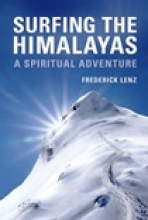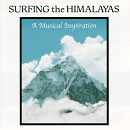|
|
||||||||
|
|
||||||||
|
The Cave in NepalA Rama student did some traveling in the Nepal and India, having some adventures with some advanced Buddhist teachers there. After returning home, the student picked up the teaching thread in a couple meditation classes, asking the class members how they had liked the various substitute teachers (some fellow Rama students kind enough to fill in) and with mock sternness demanding, "Now you were nice to them, right, so I can ask them again to substitute?" and everyone laughed. They had loved the subs and would be happy to see them again. And after hearing what the class had done for the past few weeks, the student began to answer their questions about what the trip had been like. At one point, the student was describing a day in Nepal when one of the advanced Buddhist teachers had taken some of the Rama students on the trip for a hike to a cave nearby the grounds being blessed for a new monastery that would open for both Asian and Western students. Padmasambhava, the great Buddhist enlightened master who had brought Buddhism from India to Tibet hundreds and hundreds of years ago, had meditated in this very cave and in fact, had done some profound meditations for subduing negative energies that were plaguing the area. These meditations were the origin for a Vajrakilaya empowerment which the Rama students had been invited to attend the day before. Outside the cave, in the wall, was clearly a human handprint, which the Buddhist teacher who led them to the cave told them was the imprint of Padmasambhava’s hand. That someone’s hand could be so filled with light so as to sear into rock seemed astonishing, but the energy coming from the handprint was clearly high grade and certainly didn’t feel like the result of some artisan chiseling into the rock. The class asked if the students had been allowed into the cave. "Yes, but only briefly, since each person got a turn and we couldn’t stay too long since we still had to hike back that same day and attend the memorial in the evening for Rama with the 10,800 butterlamps that the Buddhist teachers were doing to honor Rama. We did this hike on Guru Rinpoche Day, a day when the Buddhist teachers did a Padmasambhava empowerment with a celebration feast called ‘tsog’," explained the student. "So, what was it like, inside the cave?" asked the class, looking genuinely curious and interested. "It was incredible. You could really feel the energy in the cave. Like standing next to the sun or something. It was a real melt-down experience. It just blasted your mind into stillness. It’s really hard to put into words, how the energy he left in the cave is still very much alive. It was fun watching each person come out of the cave, the huge grins they had on their faces," said the student, really struggling for words to convey the experience. "So, it was like those caves in the ‘Surfing’ books?" prompted an elderly gentleman. "EXACTLY!" laughed the student, smiling to think the class now was able to draw up images from ‘Surfing the Himalayas’ and use Master Fwap to help them make sense of what the student was trying to convey. The student reminded the class that the elderly gentleman was referring to the part in ‘Surfing the Himalayas’ where Master Fwap takes the young American snowboarder to a special cave in Nepal. The snowboarder finds the cave as peaceful in feeling as the snowboarder usually feels after a full day of snowboarding when "I feel happy and relaxed and nothing else really matters much. That was exactly how I felt sitting next to Master Fwap in the Himalayan cave that afternoon." (p.168) Master Fwap explains, "There are many caves like this one in the Himalayas" and that "these are the hermitages of the great Buddhist masters of our order. Members of the Rae Chorze-Fwaz have been meditating in caves like these for thousands of years." (p. 168) "Undoubtedly Master Fwap does a much job of describing the power of these caves than I can, and I certainly never expected to be invited inside one of them in my lifetime by a Buddhist teacher. But, I can tell you from first hand experience, these caves are real, and the energy in them is every bit as special for meditation as Master Fwap claims. It was a very cool thing to sit for even a few moments in a cave where one of the great Buddhist masters has sat in enlightened meditation," said the student honestly, "but let’s not forget the energy of enlightenment is always available to us in meditation, that all the enlightened teachers are standing by, ready to help us, if we create an inner connection to them. So, enough about the trip for the moment. Let’s meditate!" And the class settled down to meditate as some Zazen music from the ‘Surfing the Himalayas’ CD began to play. Note. The Zazen music on ‘Surfing the Himalayas’ was picked by Rama (Dr. Frederick Lenz). On the back cover, he explains, "I chose these songs because they evoke and reflect the beauty, energy and happiness that I find anew everyday, in life, meditation, snowboarding, scuba diving and all activities that create a symbiotic relationship between myself and the universe. I feel that the music I have produced in this collection will elevate your mind and body, whether you are reading ‘Surfing the Himalayas’ or simply listening to the music itself." Even if you cannot make it to Nepal to sit in a cave that an enlightened master meditated in, you can listen to this music that was produced by an enlightened teacher and receive a similar benefit as Rama packed enlightened energy into each song. Just as the caves radiate a living energy beneficial for meditation long after the master is gone, so Rama’s music continues to create a doorway to higher worlds each time someone plays it. Happy listening!
|
Surfing the HimalayasFor more information:
SURFING
THE HIMALAYAS |
|||||||
|
|
||||||||
|
|
|
|||||||


